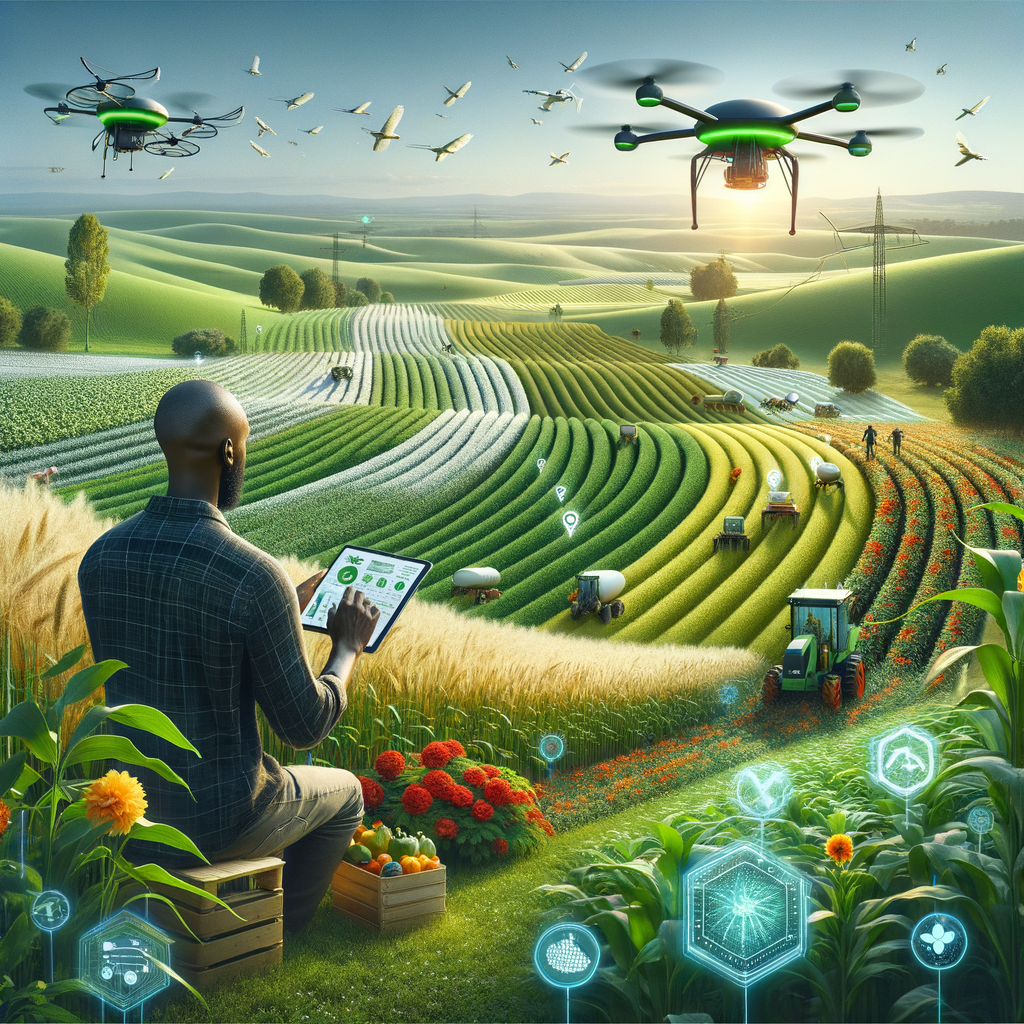Did you know that the global AI in agriculture market is projected to reach $11.2 billion by 2030? That’s right – artificial intelligence is no longer just for Silicon Valley! As a technology enthusiast and agricultural researcher, I’ve witnessed firsthand how AI is revolutionizing the way we grow food and manage farms. From autonomous tractors to crop disease detection, the fusion of AI and agriculture is creating unprecedented opportunities for sustainable and efficient farming.
Understanding AI’s Role in Modern Agriculture
Just like how smartphones revolutionized our daily communication, artificial intelligence is transforming the way we grow our food. From small family farms to large agricultural operations, AI technologies are becoming as essential as tractors and irrigation systems. These smart systems are helping farmers make better decisions while reducing waste and increasing yields.
Definition and Basic Concepts of AI in Farming
Imagine having a super-intelligent assistant that can analyze millions of data points about your crops in seconds – that’s essentially what AI brings to farming. These systems use sophisticated algorithms to process information about soil conditions, weather patterns, and crop health, much like how a skilled farmer would, but at an unprecedented scale and speed.
Evolution of Agricultural Technology and AI Integration
The journey from traditional farming to AI-powered agriculture has been remarkable. While our grandparents relied on almanacs and gut feelings, today’s farmers are equipped with sensors, drones, and smart systems that provide real-time insights. This transformation is similar to how GPS navigation replaced paper maps, making the process more efficient and precise.
Key Benefits and Challenges of Implementing AI Solutions
The benefits of AI in farming are substantial, comparable to how online banking transformed financial management. However, just as many people initially struggled with digital banking, farmers face challenges in adopting these new technologies, including initial costs and the learning curve associated with implementing new systems.
Current State of AI Adoption in Agriculture Globally
Around the world, farmers are increasingly embracing AI solutions, though adoption rates vary significantly. Think of it as similar to smartphone adoption – while some regions have fully embraced these technologies, others are just beginning to explore their potential.
Core Applications of AI in Agriculture
Precision Farming and Smart Irrigation Systems
Modern farming uses AI-powered systems that work like a personalized fitness tracker for crops. These systems monitor exactly what each plant needs, ensuring optimal growth while conserving resources. Smart irrigation systems, for instance, function like automated plant caretakers, delivering precisely the right amount of water exactly when needed.
Crop Monitoring and Disease Detection
Just as doctors use advanced imaging to diagnose patients, AI systems use sophisticated sensors and cameras to monitor crop health. These systems can spot signs of disease or pest infestation before they become visible to the human eye, allowing for early intervention.
Yield Prediction and Harvest Optimization
AI algorithms have become remarkably accurate at predicting crop yields, similar to how weather forecasting has improved with advanced technology. This helps farmers plan their harvests more effectively and manage their resources more efficiently.
Autonomous Machinery and Robotics
Think of self-driving cars, but for farms. Autonomous tractors and harvesting robots are becoming increasingly common, reducing labor costs and improving efficiency.
Data-Driven Farm Management
Agricultural Data Collection and Analysis
Modern farms generate vast amounts of data, much like how our digital activities create data trails. AI systems help collect and analyze this information, turning it into actionable insights for better farm management.
Machine Learning Algorithms for Decision Support
These sophisticated systems act like experienced farming consultants, learning from past data to make increasingly accurate recommendations about planting, fertilizing, and harvesting.
Weather Forecasting and Climate Adaptation
AI systems help farmers adapt to changing climate conditions by providing detailed weather predictions and suggesting appropriate adjustments to farming practices.
Resource Optimization and Sustainability
Like a smart home system that optimizes energy use, AI helps farms maximize resource efficiency while minimizing environmental impact.
Future Prospects and Challenges
Emerging AI Technologies in Agriculture
New innovations continue to emerge, from advanced drone systems to sophisticated soil sensors, promising even more efficient and sustainable farming practices.
Implementation Barriers and Solutions
Despite the benefits, challenges remain in making these technologies accessible and user-friendly for all farmers, similar to early challenges with computer adoption.
Environmental Impact and Sustainability
AI technologies are increasingly focused on sustainable farming practices, helping reduce environmental impact while maintaining or improving productivity.
Economic Implications for Farmers
While the initial investment in AI technology can be significant, the long-term benefits often outweigh the costs, much like how investing in modern equipment can improve a farm’s overall productivity and profitability.
Conclusion
The integration of AI in agriculture represents a pivotal shift in how we approach food production and farm management. As we’ve explored, from precision farming to autonomous systems, AI is empowering farmers with tools and insights previously unimaginable. Ready to embrace this agricultural revolution? Start by exploring how these AI solutions can benefit your farming operations or support sustainable food production in your region.

